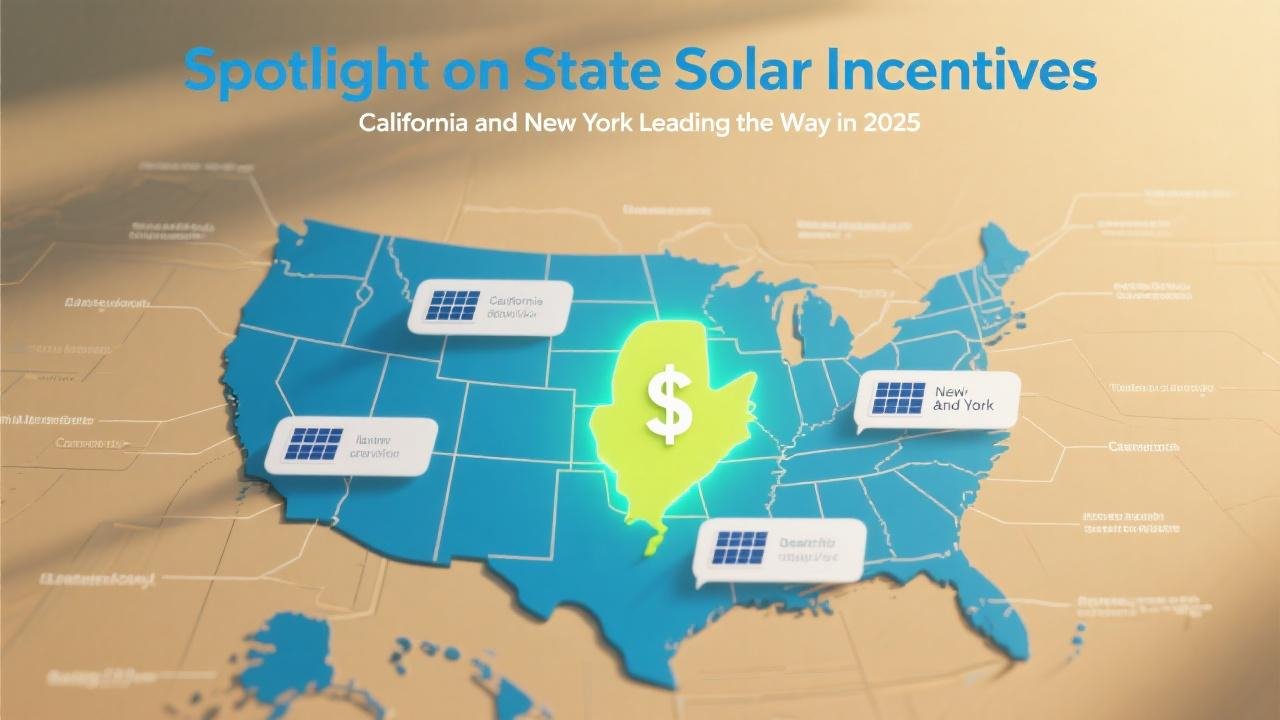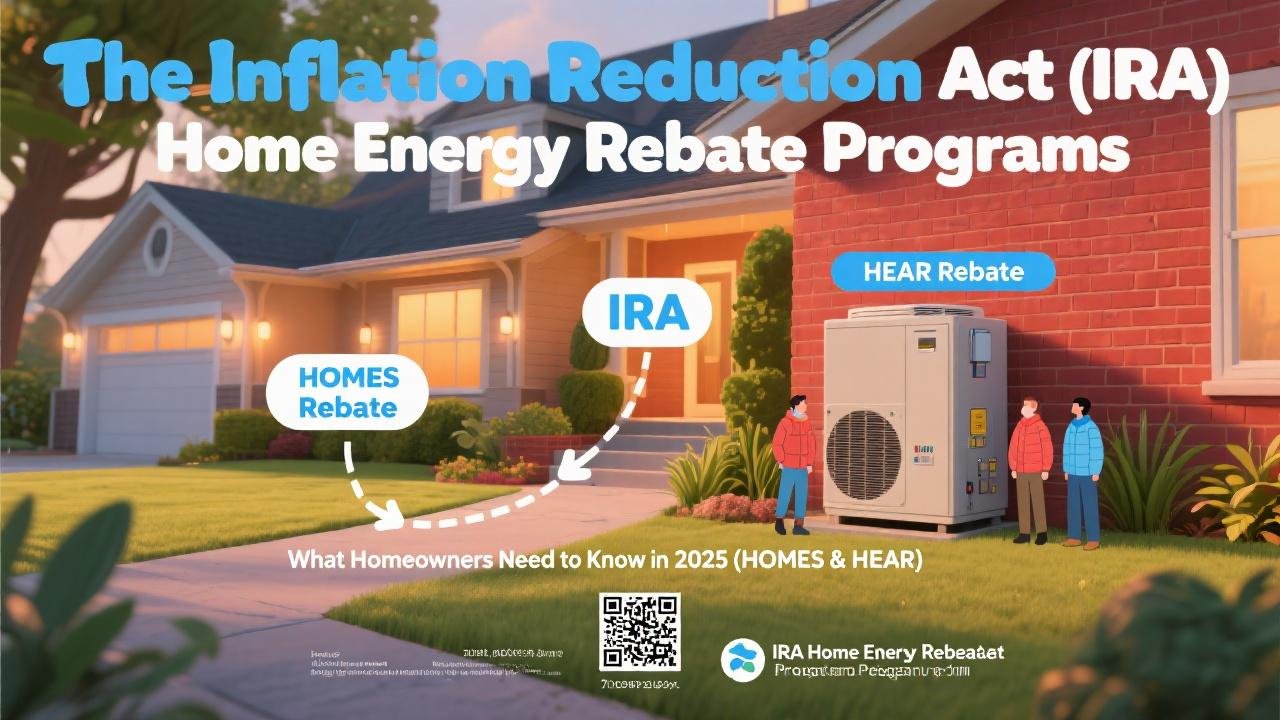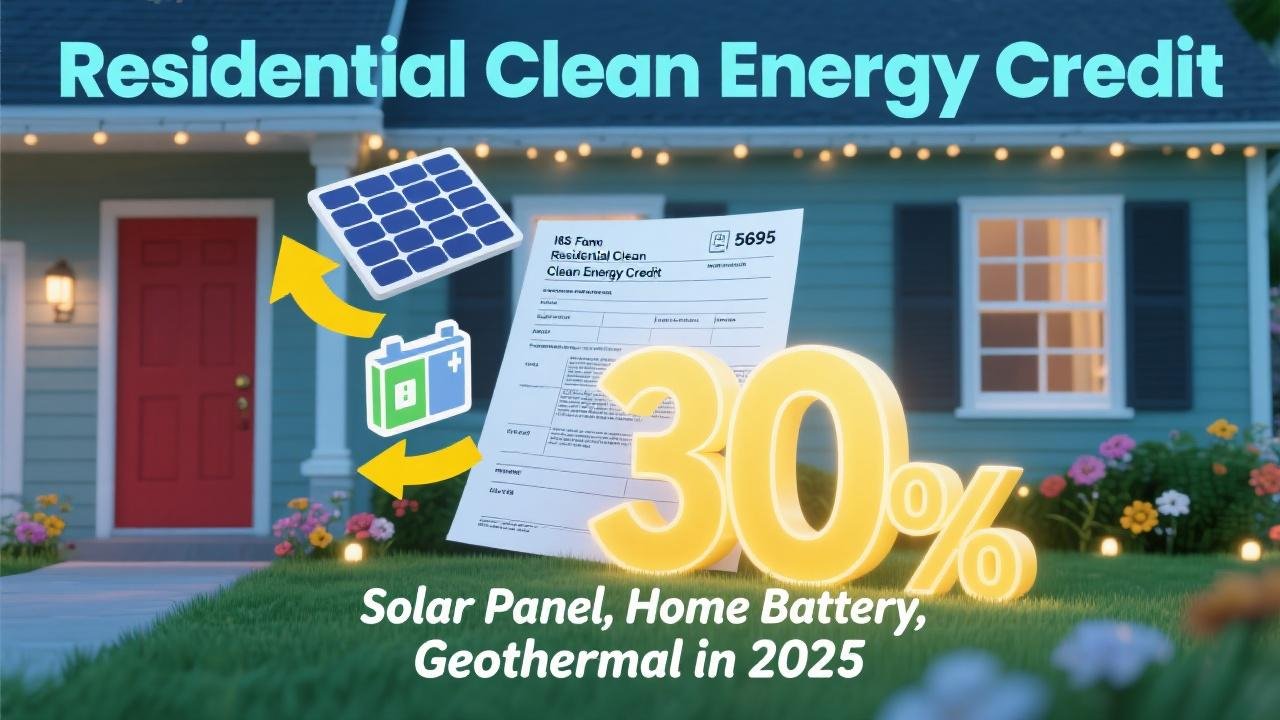How States are Powering the Solar Revolution
While federal incentives like the 30% Residential Clean Energy Credit provide a significant boost for homeowners going solar in 2025, many states have implemented their own robust programs to further encourage the adoption of solar energy and other clean technologies. California and New York have historically been leaders in this arena, offering a variety of rebates, tax credits, and supportive policies that make solar investments even more attractive for their residents. This guide spotlights some of the key solar incentives available in these two influential states as of 2025, showcasing how state-level actions can complement federal efforts. Homeowners in other states can often find similar types of programs by checking resources like the DSIRE database.
California Solar Incentives in 2025: Navigating a Mature Market
California has long been at the forefront of solar adoption in the U.S., driven by ambitious renewable energy goals and a suite of incentives. While the landscape evolves (notably with changes to net metering), significant support remains.
- Self-Generation Incentive Program (SGIP):
- Focus: Primarily provides rebates for installing energy storage systems (i.e., home batteries like lithium-ion batteries) paired with new or existing solar PV systems. It also supports other distributed generation technologies.
- Administered By: California Public Utilities Commission (CPUC), with programs run by major utilities like Pacific Gas & Electric (PG&E), Southern California Edison (SCE), and San Diego Gas & Electric (SDG&E).
- Benefit: Rebate amounts vary and step down over time as program budgets are utilized. For residential energy storage, incentives can range from $150/kWh to $1,000/kWh, depending on eligibility criteria (e.g., equity-resiliency projects for low-income or medically vulnerable customers in high fire-threat districts often receive higher rates).
- Key Point: SGIP has been instrumental in boosting battery adoption, which is increasingly important under California’s current net billing structure (NEM 3.0). The program has been extended through January 1, 2026.
- Property Tax Exclusion for Solar Energy Systems:
- Benefit: When you install a solar energy system (including solar plus storage), the added value to your home from that system is excluded from your property tax assessment for a certain period. This means your property taxes won’t increase due to the solar installation.
- Importance: This is a significant long-term financial benefit, as property improvements typically increase assessed value and taxes.
- Net Billing (NEM 3.0):
- Policy Type: California transitioned to a “Net Billing Tariff” (NEM 3.0) for new solar customers whose interconnection applications were submitted after April 14, 2023.
- How it Works: Under NEM 3.0, compensation for excess solar energy exported to the grid is no longer based on retail electricity rates. Instead, it’s based on “Avoided Cost Calculator” (ACC) values, which reflect the utility’s actual avoided cost of procuring electricity at different times of the day and year. These export rates are generally significantly lower than previous NEM 1.0 or NEM 2.0 retail rates, averaging around 8 cents/kWh compared to roughly 30 cents/kWh previously.
- Impact: NEM 3.0 strongly incentivizes pairing solar with battery storage to maximize self-consumption of solar energy and minimize exports to the grid, or to export during high-value evening peak hours. The CPUC estimates that battery-equipped systems under NEM 3.0 can still achieve a 9-year payback.
- Grandfathering: Customers under previous NEM 1.0 or NEM 2.0 tariffs are generally grandfathered for 20 years from their permission-to-operate (PTO) date.
- Local Utility Rebates and Programs:
- Various municipal utilities in California (e.g., Los Angeles Department of Water and Power – LADWP, Modesto Irrigation District) may offer their own specific rebates for solar, energy storage, or EV chargers. It’s essential to check with your local utility provider.
- California Home Electrification and Appliance Rebate (HEAR) Program:
- As part of the IRA, California is rolling out its HEAR program (called HEEHRA in CA). While not exclusively for solar, it provides rebates for electrification upgrades that often complement solar, like heat pumps and electrical panel upgrades, for income-eligible households.
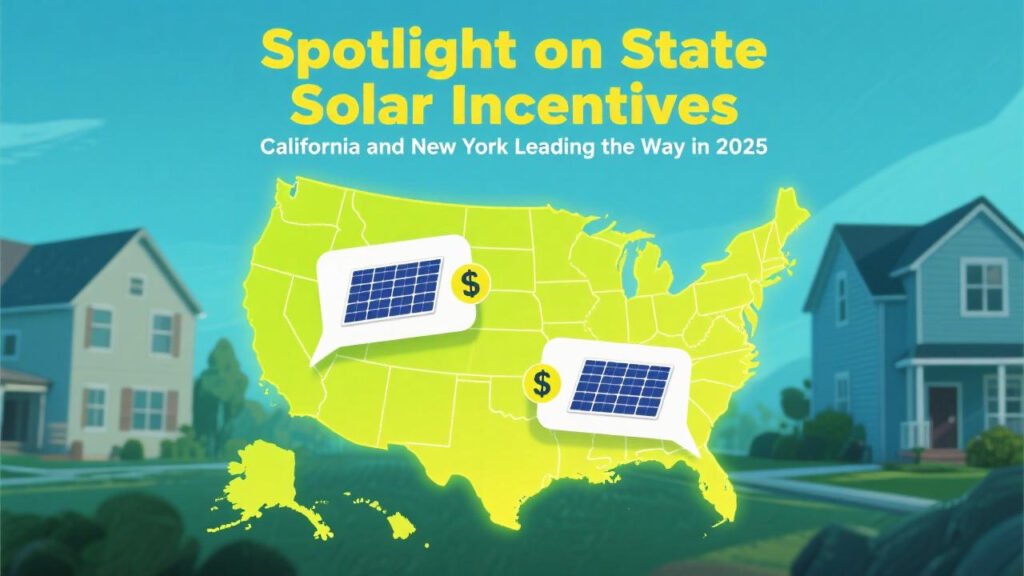
New York Solar Incentives in 2025: The NY-Sun Initiative and More
New York State is also a leader in promoting solar energy through its comprehensive NY-Sun program and other supportive policies.
- NY-Sun Program:
- Focus: NYSERDA’s (New York State Energy Research and Development Authority) flagship initiative to make solar more accessible and affordable for homeowners, businesses, and communities.
- Benefit (Residential): Offers an upfront incentive (rebate) based on the size of the solar system installed (dollars per watt). The incentive levels vary by region and block (program capacity tranches) and step down as more solar is installed. Average incentives for residential systems can range from $1,200 to $2,400.
- Eligibility: For grid-connected residential solar PV systems.
- New York State Solar Energy System Equipment Tax Credit:
- Benefit: A personal income tax credit equal to 25% of qualified solar energy system equipment expenditures, up to a maximum credit of $5,000.
- Eligible Equipment: Includes solar electric panels and solar thermal (water heating) systems. Geothermal heat pumps also qualify under this credit.
- Important: This is a state tax credit, separate from and in addition to the federal tax credit.
- Net Metering:
- Policy Type: New York has a well-established net metering policy that allows residential solar customers to receive full retail credit on their utility bills for excess electricity sent to the grid. This is a significant benefit compared to California’s current Net Billing tariff for new customers.
- Value of Distributed Energy Resources (VDER): While residential net metering remains strong, New York is transitioning larger commercial and community solar projects to the VDER Value Stack, which compensates distributed energy resources based on a more complex calculation of their benefits to the grid.
- Property Tax Exemption:
- Similar to California, New York State provides a 15-year property tax exemption for the value added to your home by a solar, wind, or biomass energy system. Local municipalities can opt out of this exemption.
- NYSERDA Administered IRA Rebates (HEAR & HOMES):
- NYSERDA is also responsible for administering New York’s share of the federal HOMES and HEAR rebate programs. Income-eligible New Yorkers can access these rebates for electrification and efficiency upgrades, which can be combined with existing NY-Sun incentives and state/federal tax credits. Initial funding is available through programs like EmPower+ and the Appliance Upgrade Program, with more IRA rebates expected in 2025.
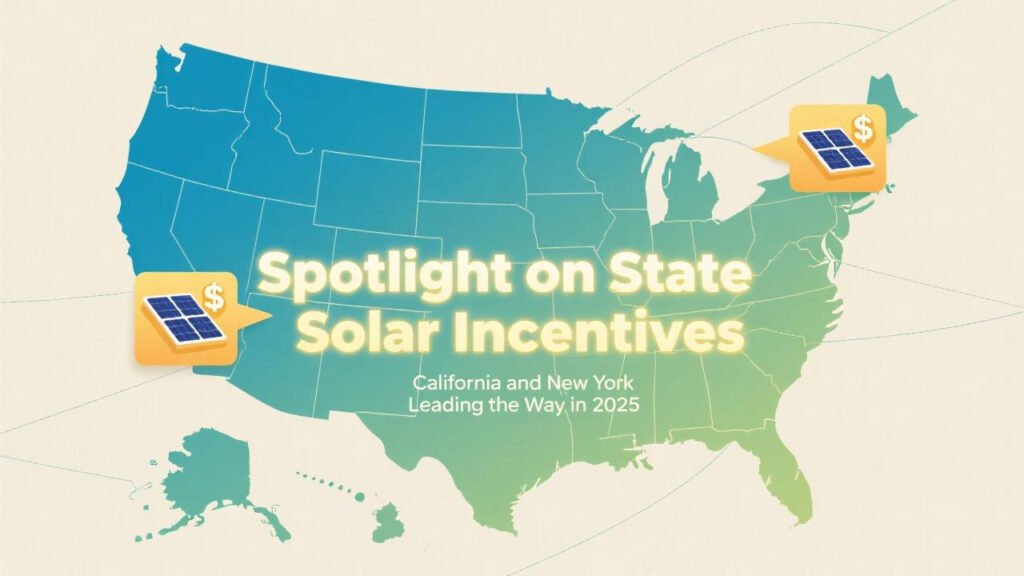
Key Takeaways for Homeowners:
- Incentives Vary Greatly: The examples of California and New York highlight how much state-level solar policies can differ. What’s available in one state may not be in another.
- Net Metering is Crucial: The structure of net metering or net billing policies significantly impacts the economics of rooftop solar.
- Batteries are Increasingly Important: Especially in states like California with less favorable export rates, pairing solar with battery storage is becoming key to maximizing savings.
- Research is Key: Homeowners must research the specific incentives available in their state and from their local utility. The DSIRE database (dsireusa.org) is the best starting point for this.
- Combine Incentives: Look for opportunities to stack federal, state, and local utility incentives to get the best possible deal.
State Leadership Driving Solar Adoption
California and New York provide strong examples of how state-level policies and incentives can accelerate the adoption of solar energy and related technologies like battery storage. While the specifics differ, both states offer substantial financial support that, when combined with federal tax credits, can make going solar a very attractive proposition for homeowners in 2025. If you’re considering solar, be sure to thoroughly investigate the programs available in your state and local area. Platforms like EnergySage can also provide valuable information on incentives and connect you with installers familiar with local programs.

